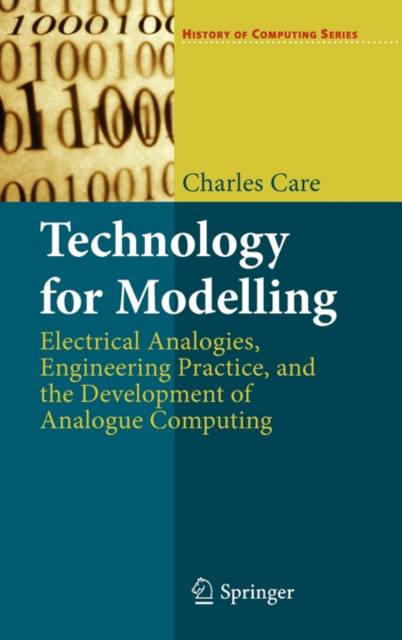
- Retrait gratuit dans votre magasin Club
- 7.000.000 titres dans notre catalogue
- Payer en toute sécurité
- Toujours un magasin près de chez vous
- Retrait gratuit dans votre magasin Club
- 7.000.0000 titres dans notre catalogue
- Payer en toute sécurité
- Toujours un magasin près de chez vous
Technology for Modelling
Electrical Analogies, Engineering Practice, and the Development of Analogue Computing
Charles Care
145,45 €
+ 290 points
Format
Description
Historians have different views on the core identity of analogue computing. Some portray the technology solely as a precursor to digital computing, whereas others stress that analogue applications existed well after 1940. Even within contemporary sources, there is a spectrum of understanding around what constitutes analogue computing. To understand the relationship between analogue and digital computing, and what this means for users today, the history must consider how the technology is used. Technology for Modelling investigates the technologies, the concepts, and the applications of analogue computing. The text asserts that analogue computing must be thought of as not just a computing technology, but also as a modelling technology, demonstrating how the history of analogue computing can be understood in terms of the parallel themes of calculation and modelling. The book also includes a number of detailed case studies of the technology's use and application. Topics and features: discusses the meaning of analogue computing and its significance in history, and describes the main differences between analogue and digital computing; provides a chronology of analogue computing, based upon the two major strands of calculation and modeling; examines the wider relationship between computing and modelling, and discusses how the theme of modelling fits within the history of analogue computing; describes how the history of analogue computing evolved through a number of stages of use; presents illustrative case studies on analogue modelling in academic research, oil reservoir modelling, aeronautical design, and meteorology. General readers and researchers in the field of history of computing - as well as history of science more generally - will find this book a fascinating insight into the historical use and evolution of technology. The volume provides a long-needed historical framework and context for these core computing technologies. Dr. Charles Care is a seniorsoftware engineer at BT and an Associate Fellow at the Department of Computer Science of the University of Warwick, UK.
Spécifications
Parties prenantes
- Auteur(s) :
- Editeur:
Contenu
- Nombre de pages :
- 203
- Langue:
- Anglais
- Collection :
Caractéristiques
- EAN:
- 9781848829473
- Date de parution :
- 05-07-10
- Format:
- Livre relié
- Format numérique:
- Ongenaaid / garenloos gebonden
- Dimensions :
- 156 mm x 234 mm
- Poids :
- 498 g

Les avis
Nous publions uniquement les avis qui respectent les conditions requises. Consultez nos conditions pour les avis.






